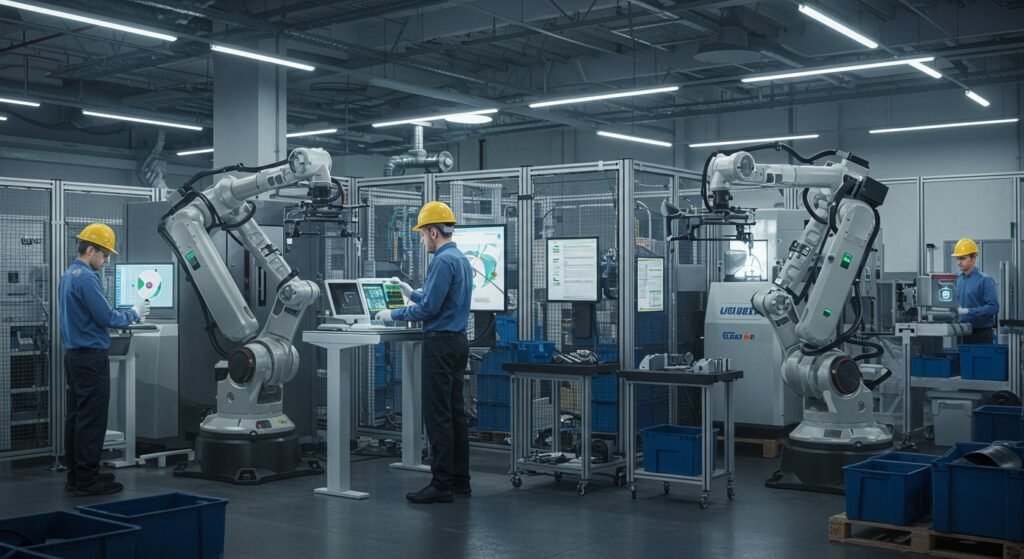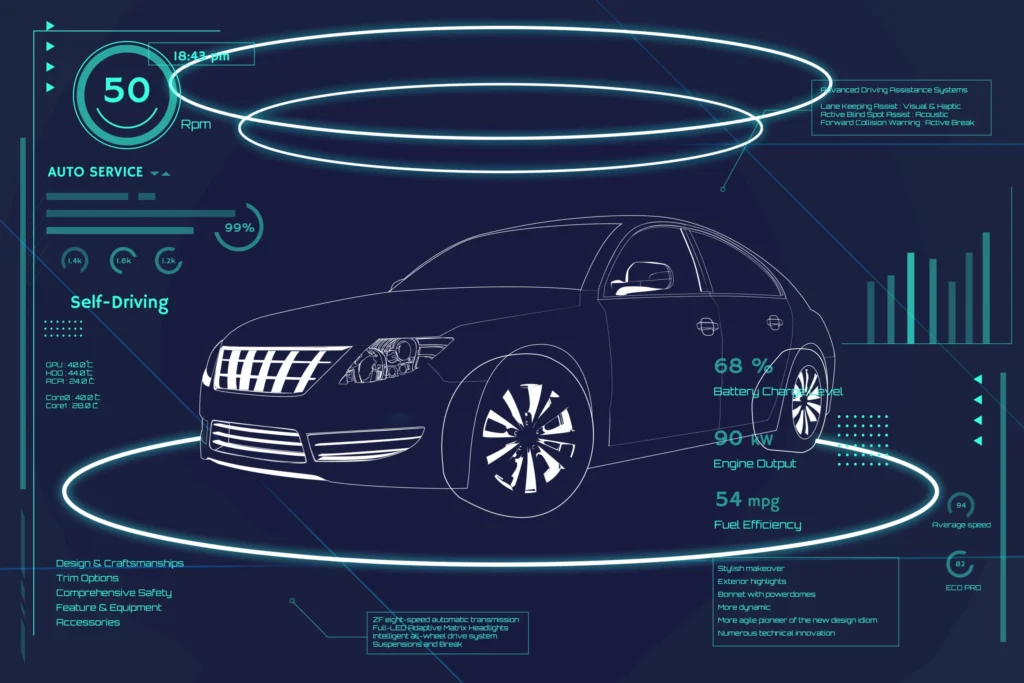Human-Robot Collaboration: The Next Frontier of Smart Manufacturing
The landscape of modern manufacturing is undergoing a profound transformation, driven by advancements in automation and artificial intelligence. At the heart of this revolution lies human-robot collaboration, a paradigm shift that integrates the precision and endurance of robots with the adaptability and problem-solving skills of human workers. This isn’t just about robots replacing humans; it’s about creating synergistic partnerships that unlock unprecedented levels of productivity, safety, and innovation in smart factories worldwide.
Table of Contents
- What is Human-Robot Collaboration?
- The Rise of Cobots: Collaborative Robots
- Benefits of HRC in Smart Manufacturing
- Challenges and Considerations
- Enabling Technologies for Seamless Collaboration
- HRC vs. Traditional Automation
- The Future of Human-Robot Collaboration
What is Human-Robot Collaboration?
Human-robot collaboration (HRC) defines a working environment where humans and robots share a common workspace and interact directly or indirectly to achieve a shared goal. Unlike traditional industrial robots that are caged off for safety, collaborative robots, or cobots, are designed with inherent safety features that allow them to work side-by-side with humans without protective barriers. This close interaction leverages the strengths of both entities: robots excel at repetitive, precise, and heavy tasks, while humans bring cognitive abilities, adaptability, and complex decision-making to the table.
The Rise of Cobots: Collaborative Robots
Cobots are the quintessential tools for successful human-robot collaboration. These advanced robots are equipped with force sensors, sophisticated programming, and user-friendly interfaces, making them adaptable to various tasks and easily programmable even by non-experts. Their compact size and flexibility allow them to be easily integrated into existing production lines, making them an attractive option for companies looking to enhance automation without overhauling their entire infrastructure. Cobots are not merely tools; they are active partners in the manufacturing process.
Benefits of HRC in Smart Manufacturing
The adoption of HRC brings a multitude of advantages to the smart manufacturing ecosystem, significantly impacting productivity, safety, and overall operational efficiency.
Boosted Productivity and Efficiency
By offloading monotonous, physically demanding, or dangerous tasks to robots, human workers can focus on more value-added activities, such as quality control, complex assembly, or problem-solving. This division of labor not only speeds up production cycles but also minimizes human error and reduces worker fatigue. The result is a more efficient production line capable of higher output.
Enhanced Safety in the Workplace
Safety is paramount in any manufacturing environment. Cobots are designed with advanced safety systems, including collision detection and limited force capabilities, ensuring that they can operate safely in close proximity to humans. This eliminates the need for extensive safety guarding, which not only saves space but also reduces the risk of injuries associated with traditional industrial machinery. For more on ensuring worker safety in automated environments, you might find our article on AI in Workplace Safety insightful.
Improved Quality and Flexibility
The precision and consistency of robots, combined with the human ability to adapt and make real-time adjustments, lead to higher product quality. HRC systems are also inherently more flexible. They can be quickly re-programmed and redeployed for different tasks or product variations, making them ideal for high-mix, low-volume production scenarios and rapidly changing market demands. This adaptability is crucial for maintaining competitiveness in a dynamic global market.
Challenges and Considerations
While the benefits are clear, implementing human-robot collaboration isn’t without its challenges. These include the initial investment cost, the need for proper training for human workers to interact effectively with robots, and the complexity of integrating diverse robotic systems into existing IT infrastructure. Furthermore, establishing robust safety protocols and ensuring seamless human-robot interface design are crucial for successful adoption.
Enabling Technologies for Seamless Collaboration
The rapid evolution of several key technologies is propelling the growth of HRC. Artificial intelligence and machine learning enable robots to learn from human demonstrations and adapt to unpredictable situations. Advanced sensor technologies, including vision systems and force-torque sensors, provide robots with a keen awareness of their surroundings and human presence. Intuitive programming interfaces, often graphical or gesture-based, simplify robot setup and task assignment, making HRC accessible to a broader range of manufacturers. Furthermore, enhanced communication protocols facilitate real-time data exchange between humans, robots, and other factory systems, creating a truly connected and intelligent manufacturing environment. For deeper insights into industrial automation trends, consider reading reports from organizations like The International Federation of Robotics (IFR).
HRC vs. Traditional Automation
Understanding the distinction between HRC and traditional automation highlights the unique value proposition of collaboration.
| Feature | Human-Robot Collaboration (HRC) | Traditional Industrial Automation |
|---|---|---|
| Work Environment | Shared workspace, humans & robots work side-by-side | Segregated, robots in safety cages, humans operate remotely |
| Interaction Level | Direct, real-time, responsive | Indirect, pre-programmed, minimal human interaction during operation |
| Flexibility | High, easily re-programmable for new tasks, adaptable | Lower, complex to reconfigure for different tasks |
| Safety | Designed with inherent safety features (collision detection) | Relies on physical barriers and strict safety zones |
| Cognitive Input | Combines human decision-making with robotic precision | Robots execute pre-defined routines only |
The Future of Human-Robot Collaboration
The trajectory of human-robot collaboration points towards an increasingly integrated and intelligent future. As AI algorithms become more sophisticated and robotic hardware more versatile, we can expect HRC systems to become even more intuitive, capable, and widespread. This collaborative approach will not only redefine manufacturing processes but also elevate the role of human workers, transforming factory floors into dynamic hubs of innovation where humans and robots together drive the next wave of smart manufacturing. The synergy created by this partnership promises a future where efficiency, safety, and human potential are maximized.
Conclusion
Human-robot collaboration is more than just a technological advancement; it’s a strategic imperative for businesses aiming to thrive in the era of smart manufacturing. By harnessing the combined strengths of humans and robots, industries can achieve unprecedented levels of productivity, safety, and adaptability, paving the way for a more innovative and sustainable future. The next frontier is here, and it’s collaborative.


